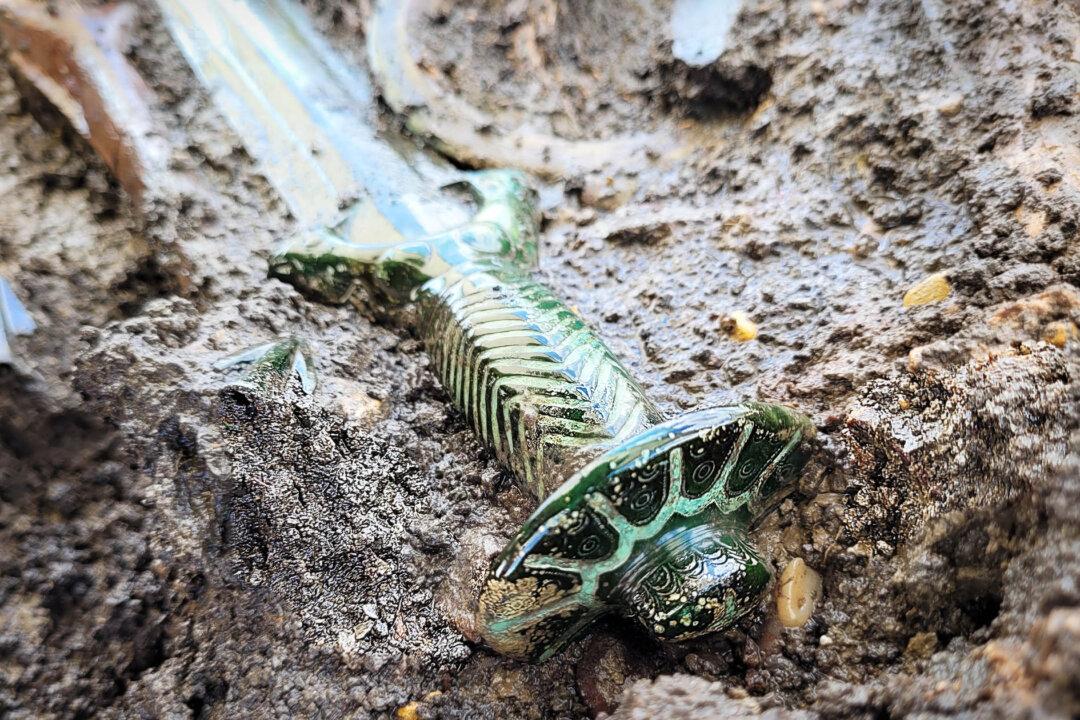German archaeologists have unearthed a very rare find during a dig in Nördlingen, Bavaria: a bronze sword believed to be over 3,000 years old still preserved in remarkable condition.
The sword has an ornate octagonal hilt made of pure bronze and is “so extraordinarily well-preserved that it almost still shines,” the Bavarian State Office for the Preservation of Monuments remarked in a June 14 press release, translated from German. Office head and general conservator professor Mathias Pfeil added that a find like this is “very rare.”





